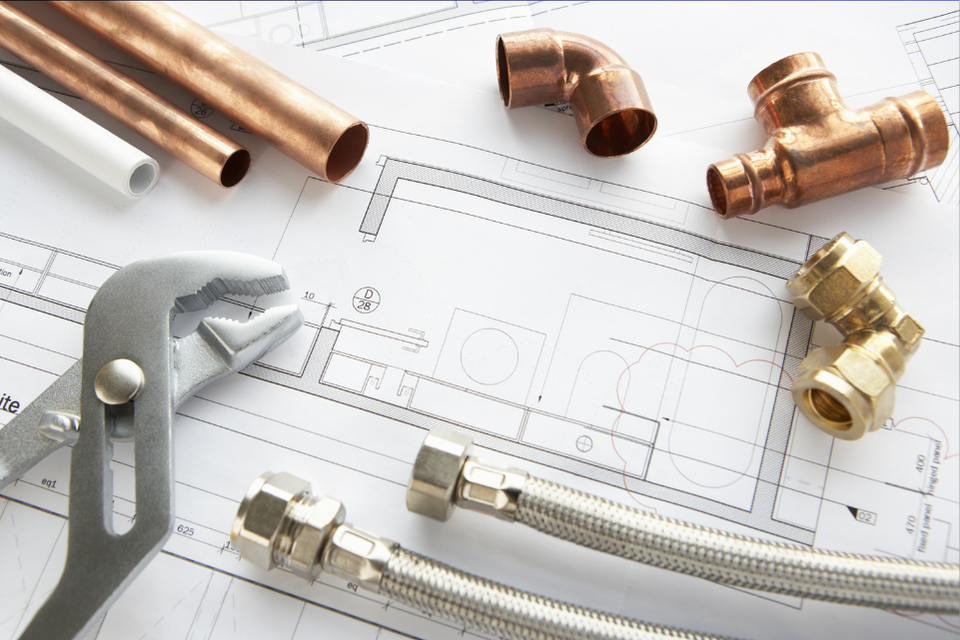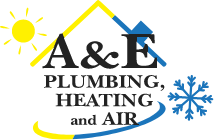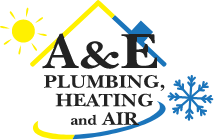
Are you wondering if galvanized steel pipes are right for your plumbing needs? With so many options available, choosing the right material is a huge decision, and it can be scary to take the next steps.
This piping option, however, has been a mainstay in plumbing systems for decades, recognized for strength and durability. However, like any material, they come with both advantages and disadvantages.
recognized for strength and durability. However, like any material, they come with both advantages and disadvantages.
With over 16 years of experience in the HVAC industry, we’ve seen the good, the bad, and the rusty when it comes to galvanized steel pipes. Whether you’re considering a new installation or dealing with an old system, we’ve got the insights you need.
By the end of this article, you’ll know all about the pros and cons of galvanized steel pipes, helping you move forward with clear information so you can feel confident in your plumbing choices.
What Are Galvanized Steel Pipes?
Galvanized steel pipes are made by coating steel pipes with a layer of zinc, known as galvanization. This process protects them from corrosion and rust, significantly extending their lifespan and durability in plumbing applications. The zinc acts as a sacrificial layer, corroding before the steel to prevent damage to the pipe itself and ultimately extending the piping system’s lifespan.
extending their lifespan and durability in plumbing applications. The zinc acts as a sacrificial layer, corroding before the steel to prevent damage to the pipe itself and ultimately extending the piping system’s lifespan.
Our plumbers at A&E Plumbing see these pipes a lot in homes and buildings built before the 1960s, but many homes are switching to other modern plumbing solutions such as copper and plastic.
5 Pros of Galvanized Steel Pipes
Galvanized steel pipes have been a reliable choice in plumbing for many years, thanks to their robust construction and protective zinc coating. These features offer several advantages that make them a viable option for various applications. Here are 5 benefits of using galvanized steel pipes.
1. Durability
When properly maintained, galvanized steel pipes can last between 40 and 100 years. The wide difference in lifespan is mainly due to the varying levels of environmental factors such as water quality and exposure to corrosive elements.
2. Corrosion Resistance
The zinc coating provides a protective barrier against rust and corrosion by keeping out moisture, which can significantly extend the pipe’s lifespan compared to non-galvanized steel. While the zinc layer's effectiveness can vary depending on the environment, it typically rusts much slower than untreated steel, at about one-thirtieth the rate.
3. Cost-Effective
Initially, galvanized steel pipes are relatively inexpensive compared to some other types of metal pipes, making them an attractive option for budget-conscious projects. They are typically priced at around $2 to $5 per linear foot.
4. Availability
Galvanized steel pipes are widely available and come in various sizes, making them a versatile option for different plumbing applications.
5. Recyclability
The recyclability of steel, including galvanized pipes, makes it an ideal choice for those who prioritize environmental sustainability.
4 Cons of Galvanized Steel Pipes
While galvanized steel pipes offer several advantages, they are not without drawbacks. Understanding these potential issues is crucial for making an informed decision about your plumbing system. Our A&E Plumbers have created a list of cons of using galvanized steel pipes, including concerns about corrosion, health risks, and maintenance challenges.
1. Health Concerns
Older galvanized pipes may have lead in the zinc coating, which can leach into the water supply, posing a serious health risk. This is particularly concerning for drinking water.
Homes built before the 1960s are more likely to have galvanized pipes with lead in the zinc coating. If your home was built before then and has not had any plumbing updates, be sure to call your local plumber, health department, or pick up a water testing kit, just to be on the safe side. Our plumbers here at A&E Plumbing, Heating and Air are on standby to make sure your home's plumbing system is in tip-top shape!
2. Water Quality Issues
After several years of use, galvanized steel pipes can affect water quality by causing discoloration. The rust and corrosion inside the pipes can lead to brown or yellowish water, which is unappealing and potentially unsafe.
3. Maintenance and Replacement
Galvanized steel pipes require regular maintenance to check for signs of corrosion and damage. Over time, internal rust and mineral buildup can reduce water flow and cause leaks, necessitating frequent inspections and upkeep. Replacing sections of galvanized pipes can be costly and labor-intensive due to their weight and the difficulty of working with them.
cause leaks, necessitating frequent inspections and upkeep. Replacing sections of galvanized pipes can be costly and labor-intensive due to their weight and the difficulty of working with them.
It’s also important to add that when integrating galvanized pipes with newer materials like copper or PVC, special fittings are often required to prevent galvanic corrosion, which can occur when dissimilar metals come into contact. This adds complexity and cost to any repair or replacement project.
4. Weight
Galvanized steel pipes are heavy, making them more difficult to handle and install compared to lighter materials like plastic or copper. This can increase labor costs and the time required for installation.
Who Are Galvanized Steel Pipes Good For?
Industrial and Commercial Buildings
Galvanized steel pipes are highly durable and resistant to corrosion, making them suitable for industrial and commercial buildings. These pipes can handle high pressure and are less likely to suffer from leaks or bursts, ensuring a long-lasting plumbing system that requires minimal maintenance.
Rural and Agricultural Applications
In rural areas and agricultural settings, galvanized steel pipes are often used for water supply lines due to their robustness and ability to withstand harsh environmental conditions. They are effective in outdoor applications where exposure to elements could corrode other types of pipes.
water supply lines due to their robustness and ability to withstand harsh environmental conditions. They are effective in outdoor applications where exposure to elements could corrode other types of pipes.
Budget-Conscious Projects
For projects where cost is a significant factor, galvanized steel pipes can be an economical choice. They are generally less expensive than some modern materials, providing a cost-effective solution for plumbing systems without compromising on strength and durability.
Who Are Galvanized Steel Pipes Not Good For?
Environments Requiring Flexibility
Galvanized steel pipes are rigid and can be difficult to work with in applications requiring flexibility. For installations where pipes need to navigate around obstacles or fit into tight spaces, more flexible materials like PEX or copper are preferred due to their ease of installation and adaptability.
Areas with Hard Water
In regions with hard water, galvanized steel pipes can suffer from scale buildup more quickly. The minerals in hard water can accelerate corrosion and reduce the pipe’s diameter, leading to decreased water flow and potential blockages. In such areas, materials like PVC or CPVC are often more suitable.
How You Can Choose the Best Pipe Option for Your Home
When you first started reading, you may have felt uncertain about whether galvanized steel pipes are the right choice for your plumbing needs. The decision can indeed be overwhelming, given the many factors to consider. After reading this article, however, you should have a comprehensive understanding of the pros and cons of galvanized steel pipes, which will help you move forward with a better understanding of this option for your home.
article, however, you should have a comprehensive understanding of the pros and cons of galvanized steel pipes, which will help you move forward with a better understanding of this option for your home.
Our 16+ years in the HVAC industry has given us a keen insight into the pros and cons of galvanized steel pipes, and this experience has led us to guide you and other homeowners just like you through these choices with confidence.
Now that you know the pros and cons of galvanized steel pipes and have an idea if they’re a good fit for you, it’s time to start researching the cost of a plumber. Our article, “How Much Does a Plumber Cost?” is the perfect next step so you can learn about the average Oregon plumbing rates, making it easier to start building your budget.
Daphne Hunt holds a bachelor's degree in English and Mass Communication and has a lifelong passion for writing. She thrives on using her skills to craft compelling pieces that inform, inspire, and connect with readers.
Topics:

